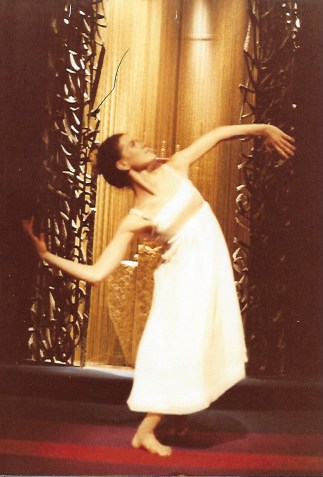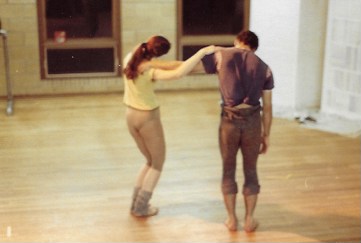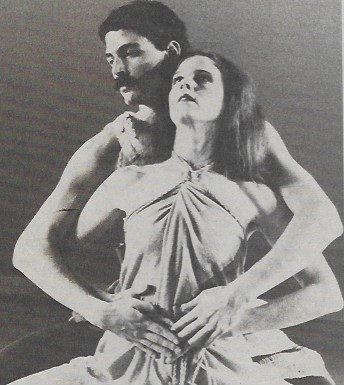This January, 2018, I had one of those milestone birthdays. Even writing this finds me in a state of disbelief. I have lots of energy, am eagerly starting new projects and don’t feel or view myself as a “senior” in “retirement.” This past November I also had my first health scare, which required a minor outpatient procedure under anesthesia. Both having a milestone birthday and facing the health scare have reminded me not to put off things that have been long on my mind. My life, particularly with dance as its thread, has been very rich and rewarding, shared with many wonderful collaborators. In the back of my mind has been the intention to find a way to share that story.
To deal with the health scare, by January I had found an excellent doctor and hospital, and the procedure had been scheduled for February. But I wouldn’t have any contact with the anesthesiologist until just before the procedure. The thing that scared me most was being “put under.” It had been over 40 years since I’d had anesthesia, and I remembered being groggy afterwards, for quite a few days.
When I shared my wish not to be overly drugged, the physician suggested I ask the anesthesiologist not to give me a narcotic. I did so on the phone when the anesthesiologist contacted me the night before the procedure, but I did not get any agreement. The next morning I repeated my request, again with no agreement – only the response that he wanted to make sure I didn’t experience much pain. I replied that if I woke up to pain I would request something. Still no agreement. Finally I said, “Look, I come from a dance background, and we are used to dealing with pain all the time.”
“What kind of dance did you do?” he asked.
“Mainly Graham technique, and I directed and was the main choreographer for a dance company for 30-plus years,” I replied.
“My wife was a dancer . . . mainly ballet, and OK no narcotics.”
When I woke up, I was bright eyed and in almost no pain. Yeah! I had not had any narcotics and the procedure had been short and successful. I asked for my bed to be put into an upright sitting position. A few minutes later the anesthesiologist came bounding in with a big smile on his face, holding his IPad. “I found you,” he said cheerfully, as he showed me a picture of myself with Louis Johnson, a prominent choreographer I had collaborated with. Before I could respond, he was gone.
Later I learned that he had also shown the picture to my husband, along with a picture of his wife on pointe.
For the next two days, I couldn’t stop thinking about the picture of Louis and me. First, where did it come from? That answer I easily found, when I googled myself: “JoAnne Tucker choreographer.” What came up was the history section of The Avodah Dance Ensemble, the company I founded and directed for its first 30-plus years. There, close to the top of the page, was the picture of Louis and me. As I skimmed through the history I realized how incomplete and brief it was, not really telling the story. During the next few days I found myself wanting to share more. To share how dance has been a thread throughout my life – from the time I began loving to dance to my grandmother’s piano playing in the large living room in her house, to today when I have just completed a film on movement and meditation for domestic violence survivors. There are so many rich stories in Avodah’s history, from challenges to get furniture moved so we could dance on the bimah, to unique collaborations with poets, visual artists and other choreographers.
Part of what I have loved about my life in dance is that it has always been about collaborating. Simply writing a book won’t work for me. What I want to do instead is write a blog about “mostly dance” in my life and encourage others to fill in the blanks, via comments or even a guest blog, sharing their thoughts/reflections of similar shared experiences either with me or with others.
While I enjoy writing, I am aware that I need an editor. The person who immediately came to mind was Kezia Gleckman Hayman. Kezia is a good friend and danced with Avodah for 13 years, during which she also edited and wrote for the Avodah Newsletter. We shared many experiences, and she knows the majority of repertory I plan to write about. I am thrilled that she has agreed to join this journey.
Here’s what is planned. We will post a blog once a week. We will welcome your comments and I will regularly reply and acknowledge them. If you would like to write a guest blog, email me and we will explore the possibility.
I will not be blogging material in chronological order but rather covering what interests me most at the time. To start with, I am going to be writing about my collaboration with Louis Johnson, since the picture of Louis and me was the inspiration for “Mostly Dance.” Here’s the picture!

Photo by Tom Scott
 Print This Post
Print This Post
Recent Blogs
- The Pioneers of Modern Dance: My Firsthand Experience
- A Visit to a Costa Rican Art Museum Triggers a Fascination with Mascaradas
- Thoughts after Streaming a Memorial for Dance Critic Jack Anderson
- Keeping Up With What is Happening in the Dance World
- A Sijo Poem for the Winter Solstice
- Episode 33: The Universal Dancer Podcast – I’m Interviewed by Leslie Zehr
- The National Symphony of Costa Rica
- Can you go home again?
- Odd Thing to Find on eBay
- Chopping in the Kitchen





















